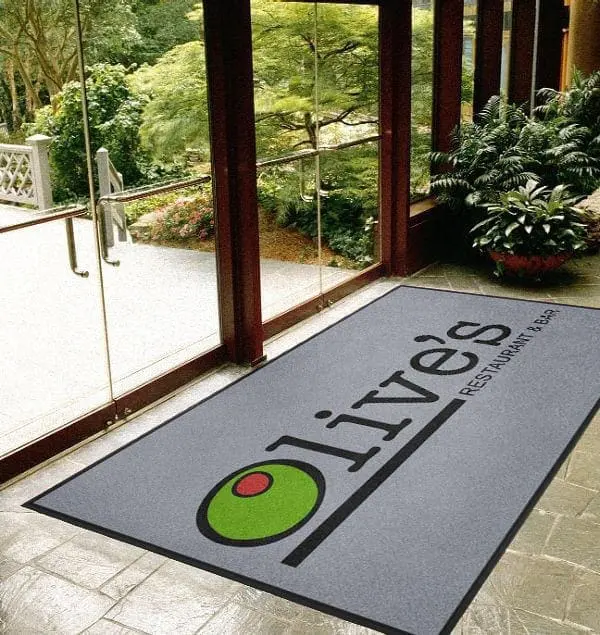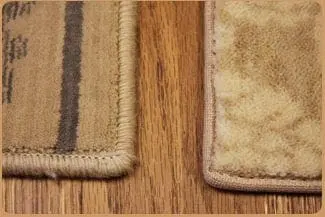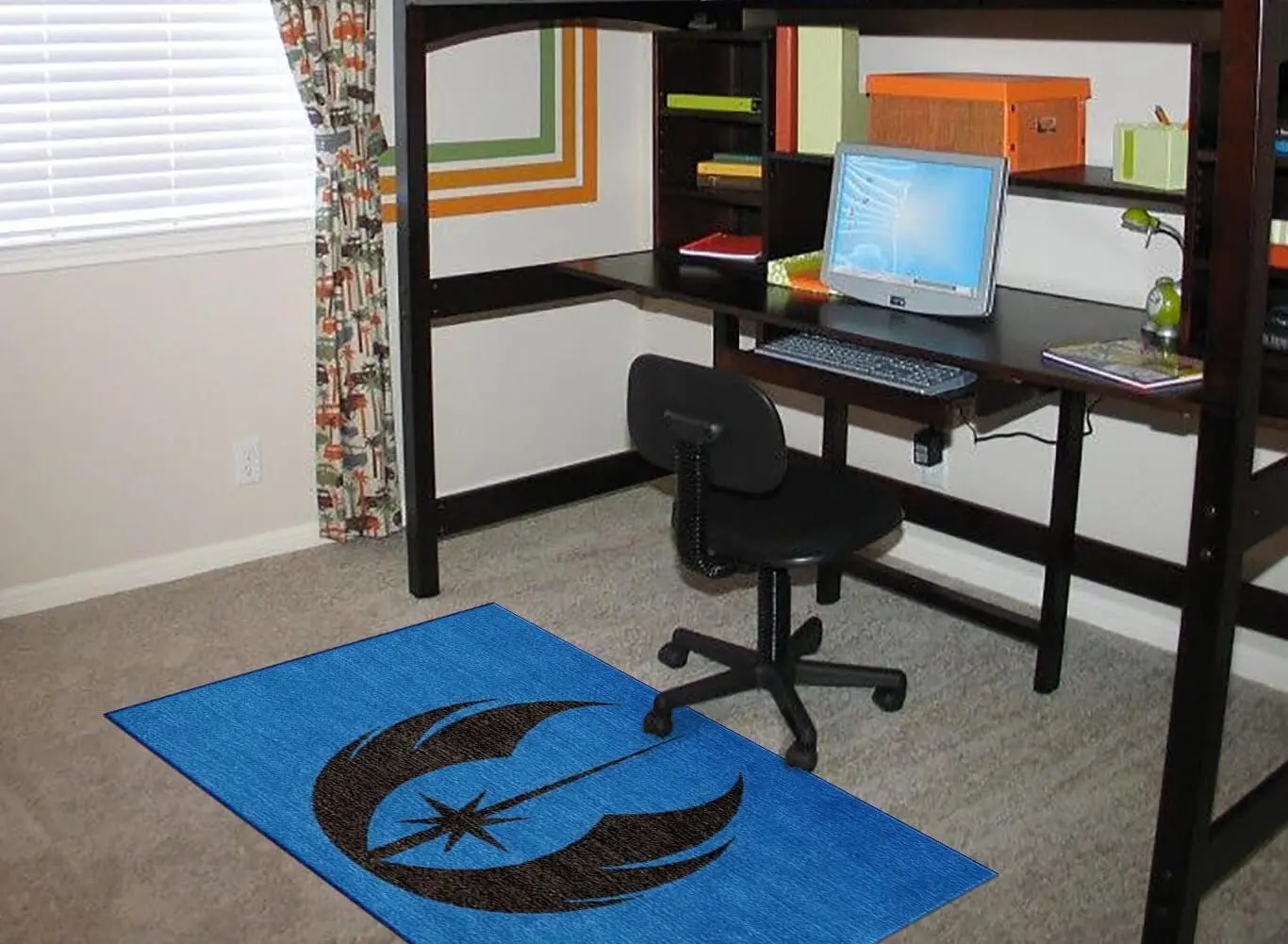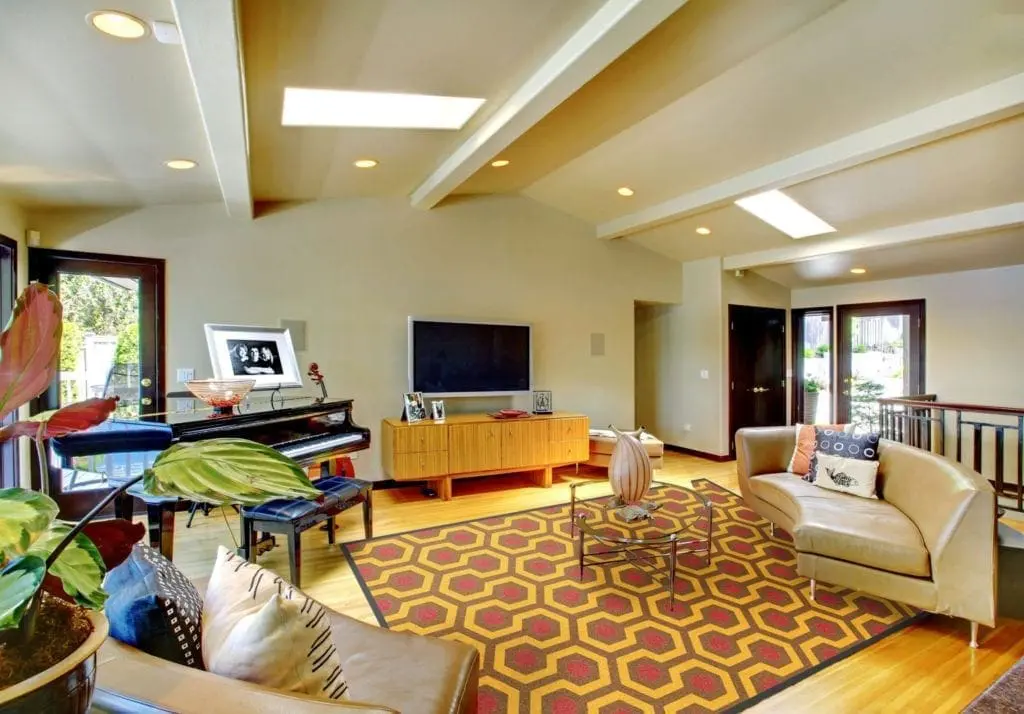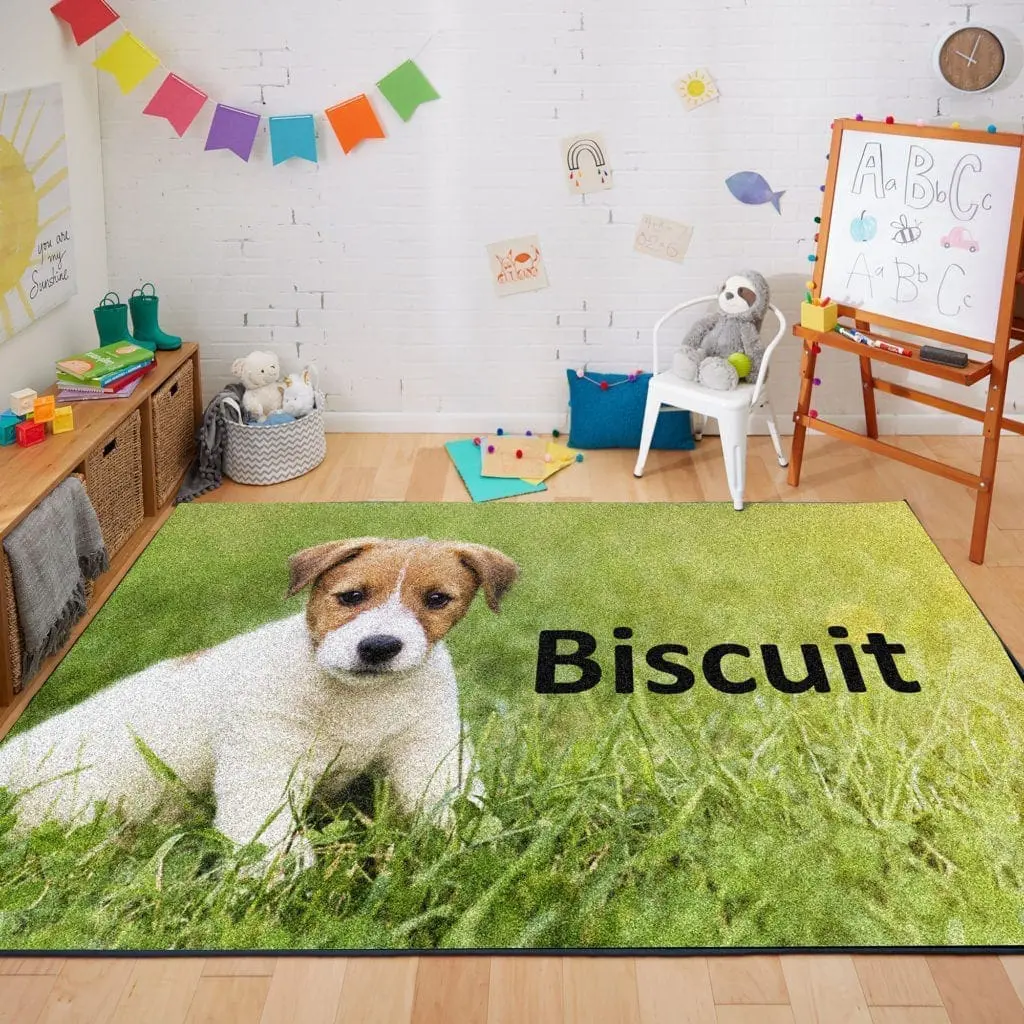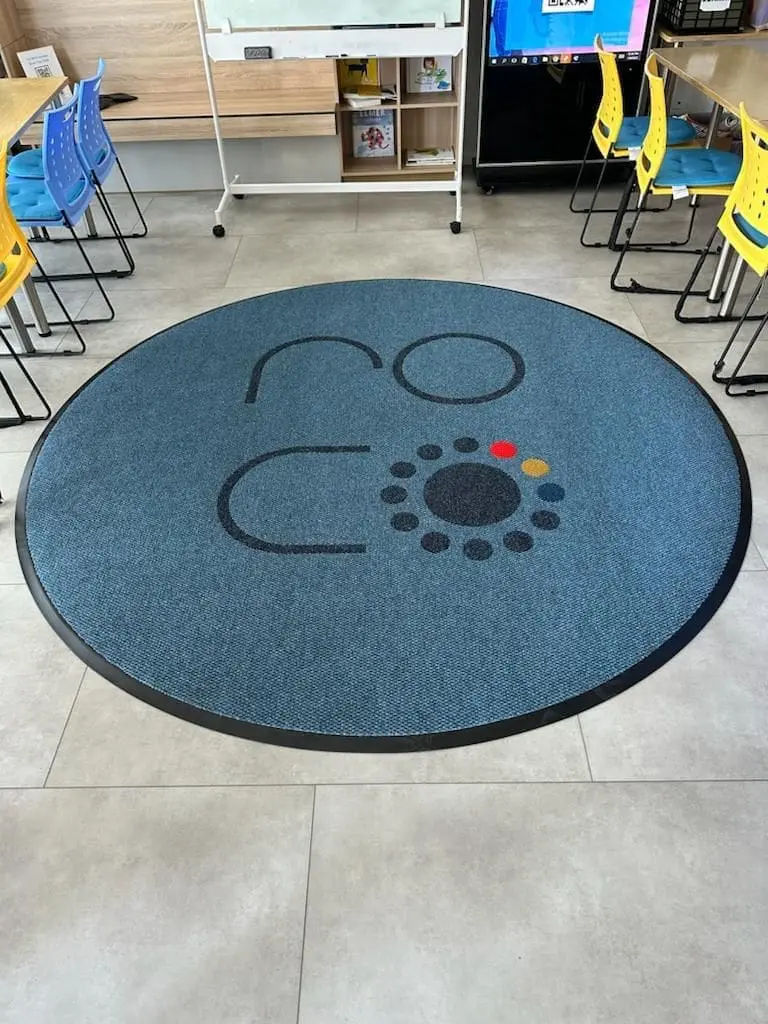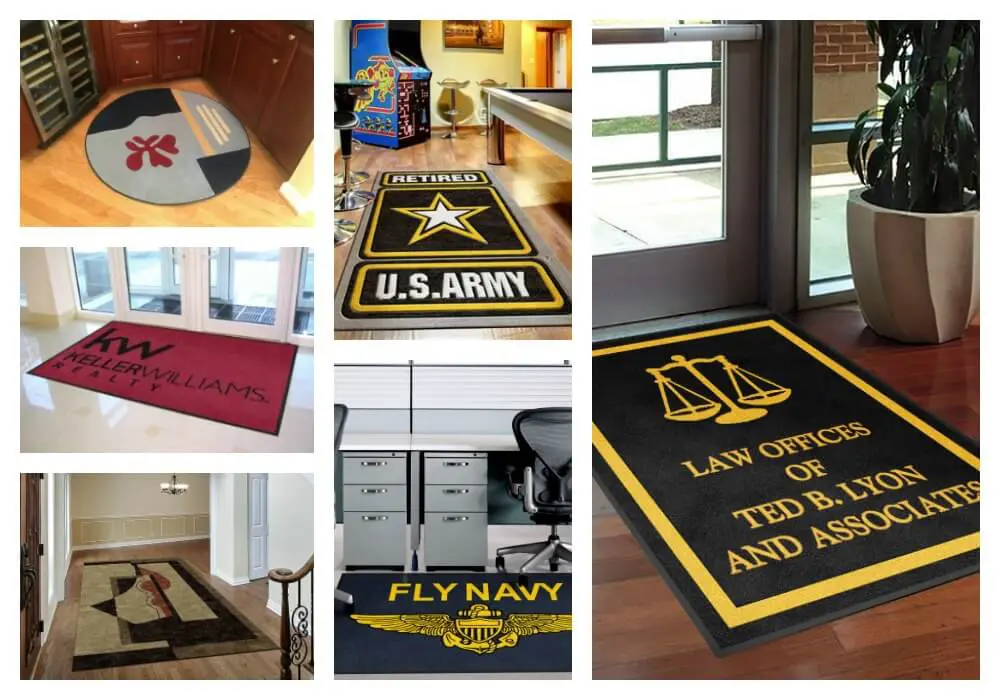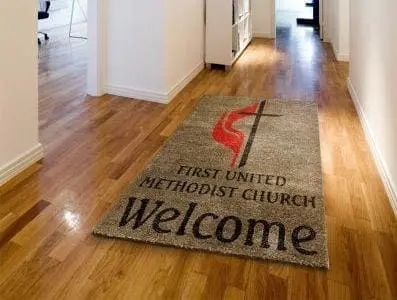The Magic Doormat
Common Rug Measuring Mistakes and How to Avoid Them
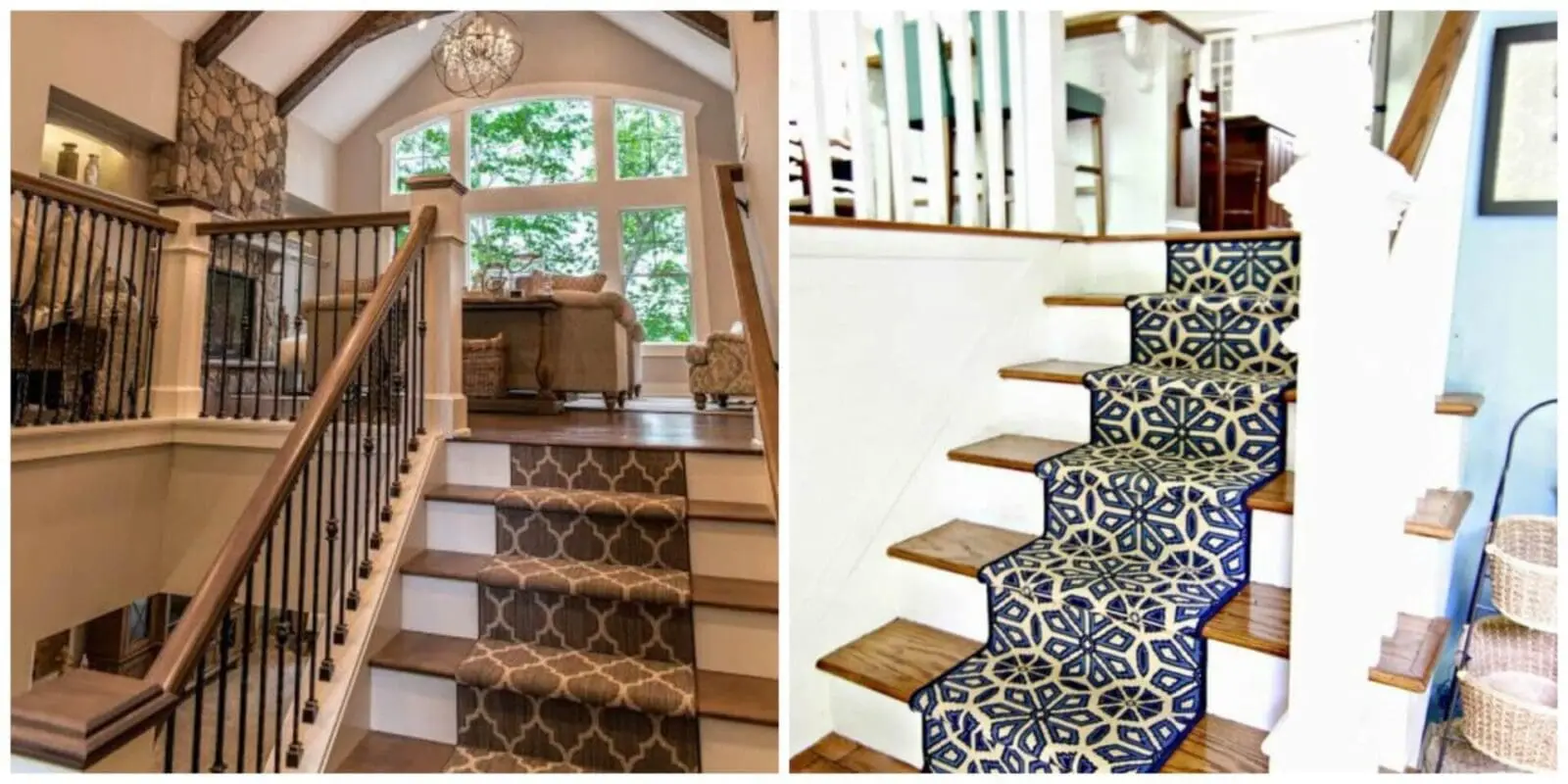
Rug Measuring Faux Pas- Common Rug Measuring Mistakes and How to Avoid Them
We have been in the business of making Custom Rugs for over 30 years. When a client wants a custom-size rug, we measure the area or offer tips on the best rug size. A room or space will benefit from the warmth, texture, and color that an area rug brings to any living space.
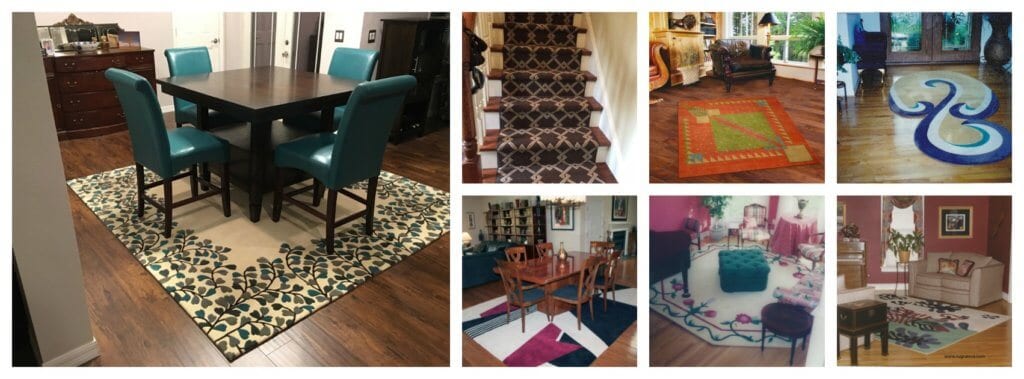
However, the extensive array of rugs and carpets available can make your choice 10 times harder. When shopping for area rugs, you definitely know which room it’s going in. You also probably have a design and color in mind. But I’m willing to bet top dollar that the sizing, measurement, and placement of your new rug are all a bit fuzzy.
Not only could the wrong placement choices cause your rug to lose its shine, but a bad fit can morph a designer purchase into an area rug faux pas faster than you can say welcome mat.
To help you choose the right measurements for your dining, bedroom, stairway, and hallway rug, we’ve come up with the rug measuring guide and tips. Here are the most common rug measuring mistakes in the respective areas and how to avoid them.
Common Rug Measuring Mistakes
Ignorance is not bliss, it’s an embarrassment. If you don’t want your area rugs making your room or decor looking not pulled together, you need to avoid the following mistakes:
Dining and Living Room Rug Measuring Faux Pas
Getting a Rug that Is Too Small for the Dining Table
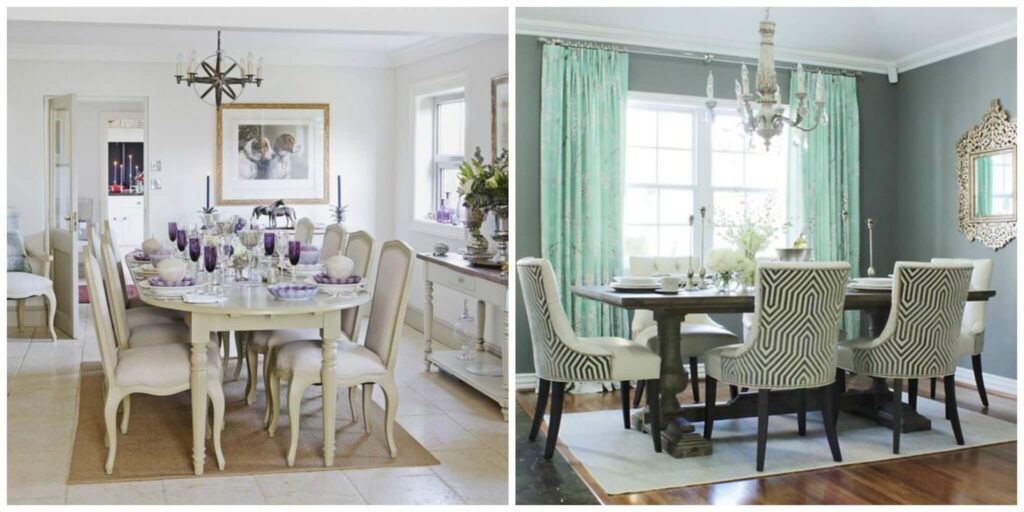
The dining Room Rugs are too small to fit under the table. rugs look like postage stamps under the tables
Like all other rooms, the dining room is an ideal place for an area rug. However, this only applies if the rug is the right size for the table. One of the most common dining room rug measuring mistakes many people make is to buy a rug that is so small that the dining chairs come off when pulled back. As a result, guests will be sitting at an awkward angle.
Additionally, the chairs will constantly rub against the edges of the rug and cause damage. Fortunately, there are ways to prevent this from happening whether your dining table is round, oval, or rectangular.
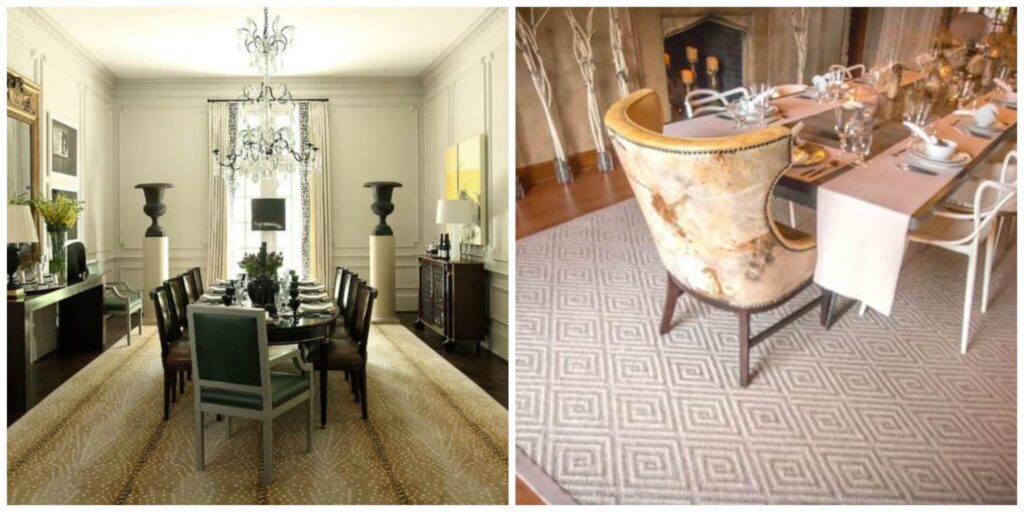
Images show Dining Room Rugs that are placed under the table with plenty of room for chairs to pull out while framing the table and the room.
How to Avoid this False Step – To prevent such a situation from happening, take measurements while the table is closed, which means the chairs are pushed up to the table. Take out your tape measure and allow for at least 18″ from the back chair leg on each side. This is a minimum rug measurement. If the room allows adding more. Also, there is usually more room on the sides than the ends. The ends and sides do not need to be equal, so add more on the sides if you have the room to do so.
Getting a Rug that’s Too Small for the Living Room (Postage Stamp Effect)

Living Room Area Rugs are too small for the space. These rugs look like postage stamps in the room.
If your rug is too small for the living room, it immediately shows at first glance. A good rug should frame your chairs, tables, and any other furniture in the living room.
An undersized and mismatched rug has the unfortunate effect of drawing the eyes in and making the room look much smaller than it is. To make things worse, the area rug will just sit in the middle of the room like an awkward postage stamp.
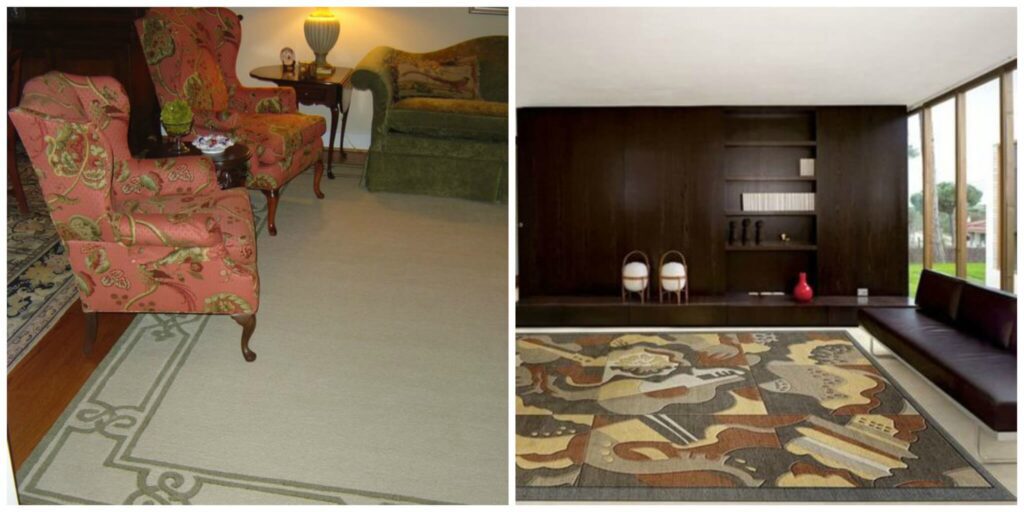
Living room rugs frame the furniture, lines, and space, making an inviting and warm room
How to Avoid this False Step– As a general rule of thumb; if it doesn’t cover a good part of the room, it’s probably too small. Also, use the lines of the room, doorways, windows, trim, bookshelves, furniture lines, etc. for markers on where your rug edges.
Common Bedroom Rug Measuring Mistakes
Getting a Rug that Doesn’t Extend Beyond the Edges of your Bed

These area rugs don’t add anything to the bedroom decor. They look like postage stamps just placed in the room
Getting a rug that is too small for your bedroom not only impacts the overall appearance, it also butchers your comfort. If your rug does not extend far beyond your bed, then you’re probably hiding most of it under there for the dust mites to enjoy. Secondly, you’re stepping on the cold hard floor which kind of defeats the rug’s purpose.
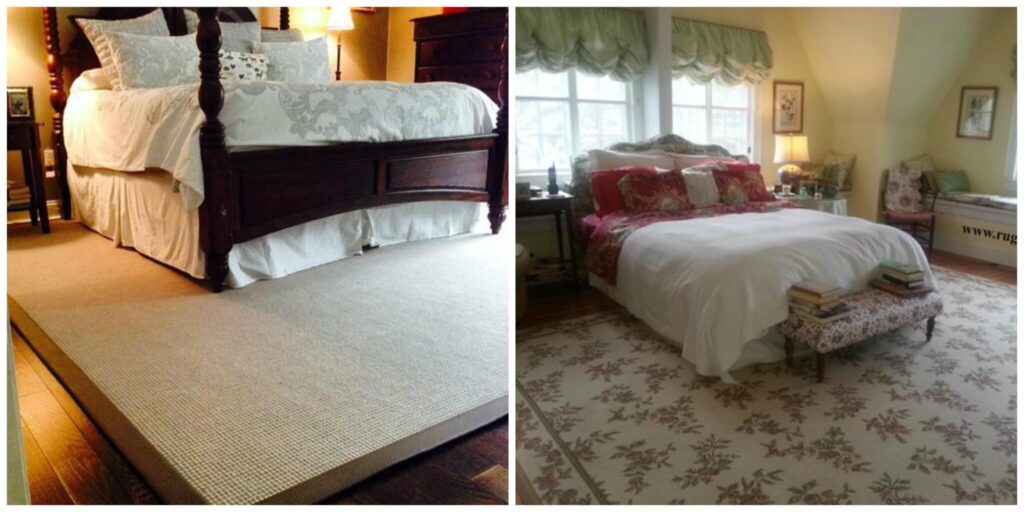
Custom Bedroom Area Rugs fill the space and warm the room. Rug sticks out on either side of the bed to warm feet when getting out of bed.
How to Avoid this False Step – To make the most out of your bedroom rug, the size should depend on your bed. Extend the rug to the end of your nightstands or just past them. The rug can start anywhere under the head of the bed to past the foot all the way to pieces of furniture. A rug can be half off and half under furniture. Also, remember to follow the lines of the room.
Common Stair Runner Measuring Mistakes
When it comes to fitting your steps with a stair runner, the innovations found here are truly profound. Not only do these stair runners provide a reliable safety feature for the stairway, they also add to the overall beauty and effect. However, some common mistakes made when measuring for a stair runner could turn your stairway into a dull and narrow landing strip.
Stair Runners Look Like Landing Strips (Landing Strip effect)
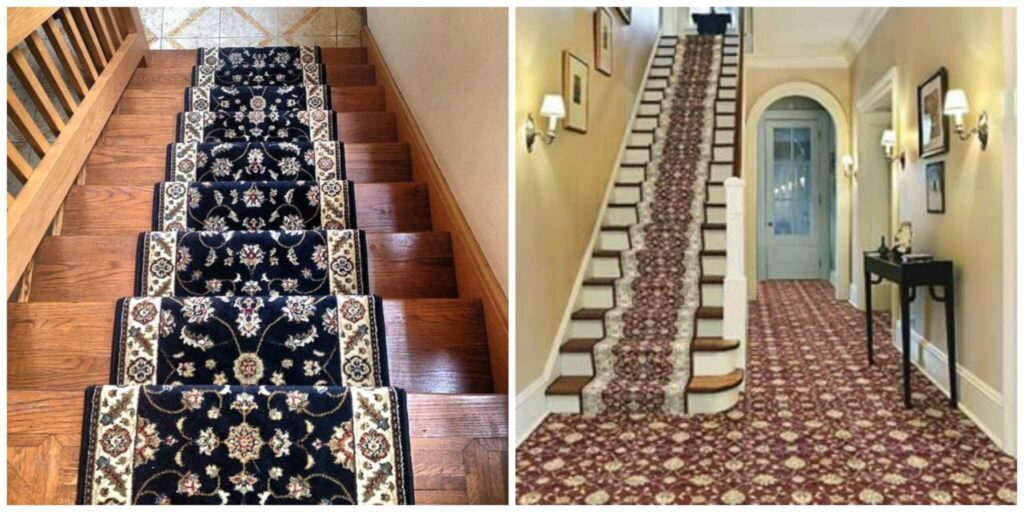
These runners would look much nicer and frame the steps if they were wider. Narrow runners draw the eye in and make the stairs look too narrow.
Unless you’re planning to open up an airport in your home, nothing looks more out of place than a landing strip on your stairway. This basically means that you measured your stair runner width too thin and ended up with a small strip of rug sitting awkwardly in an overly wide stairway.
The landing strip effect brings the eye in and makes your runner look smaller than it is. This also creates an uncomfortable feeling when climbing the seemingly narrow stairway.
How to Prevent False Step – As a rule of thumb for proper stair runner width, it’s advisable to leave at least 2-3 inches of flooring on either side on narrow steps, leave slightly more on wider steps of 36″ or more. It’s important to note that the pattern of your rug also contributes to the visual appeal. So make sure you make use of your stripes, prints, shades, and colors.
Geometric Stair Runner Rug Measuring Mistakes
There’s no doubt about it, stair runners can be confusing, especially when they involve graphic and geometric shapes. In addition to getting the width right, you have to make up for hidden dimensions and styles that are just out of this world. Making a mistake on the width will leave your stairway looking half-baked; as if there wasn’t enough material to finish up.
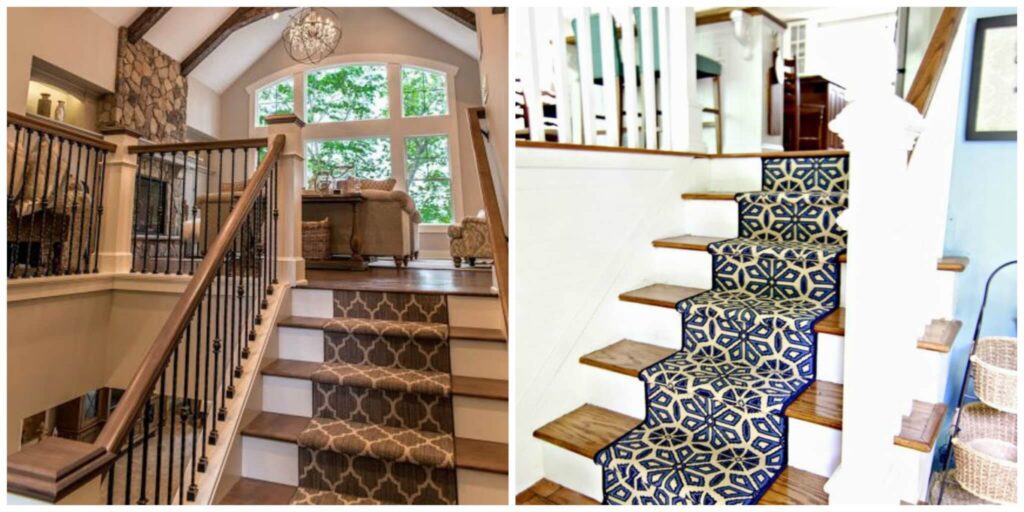
Geometric Stair runners should be as wide as you can make them show the pattern. A narrow patterned runner does not do the stairs or the pattern any justice.
How to Avoid This False Step – Show off your pattern with a wider step runner.
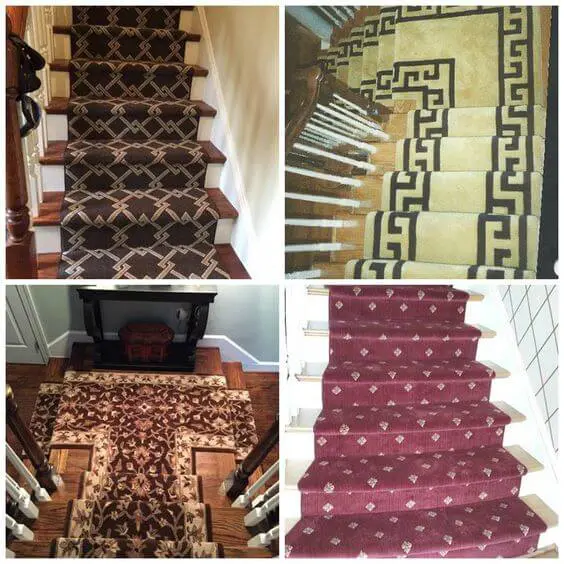
Properly Sized Stair Runners
Postage Stamp Effect on Stair Runners (Narrow Treads)
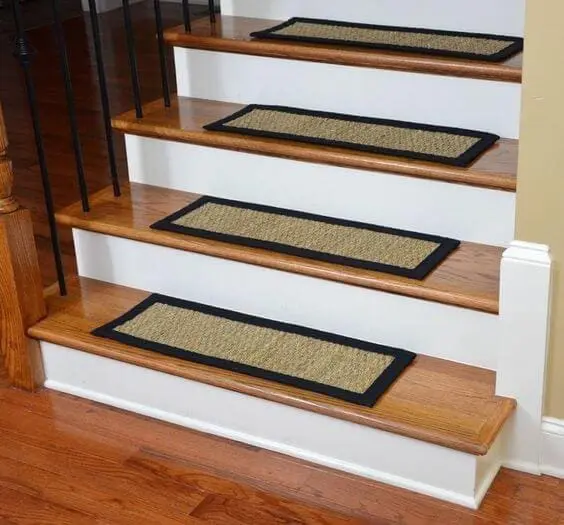
These treads add nothing to this set of steps. They look like postage stamps on each step. A stair runner would look much nicer
Whether for convenience or cost savings, some homeowners choose to buy those individual treads for their stairway. These are several pieces of rugs that are laid down on each and every step.

Custom Stair Treads
How to Avoid the False Step – If you’re going to get treads, you might as well get it right. First off, since the tread is on its own, it should be as long as possible to give you more traction. Cover the width and length of the step.
But really in my opinion, a stair runner looks much nicer than individual stair runners.
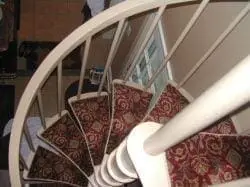
Spiral Stair Case Carpet Treads
The only exception would be a spiral staircase, where there really isn’t much choice except to have individual treads.
Final Word about Measuring for Area Rugs
All your area rugs should do justice to every part of your home. Remember, making the most out of your rug purchase is imperative. So don’t hide away those pretty rugs or settle for the wrong measurements. Read more on Tips on How to Measure for an Area Rug
One tip that we use all the time in measuring for rugs, is to lay masking tape down where you think the rug should be instead of just using the tape measure. This is a visual for you. You can’t get a good visual from just using the tape measure.
Rug Rats possesses a strong commitment to customer care. Each custom-made rug we create can be quite a unique work of art of design and style.
Whenever you absolutely need to have the very best there exists in custom rug design and manufacturing, contact Rug Rats and we’ll be only too happy to help you with any custom design rug project.

